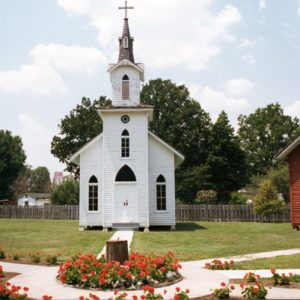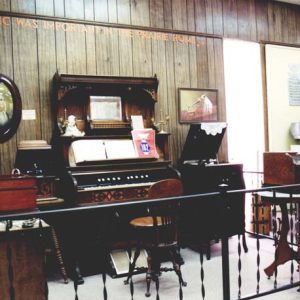calsfoundation@cals.org
Museum of the Arkansas Grand Prairie
The Museum of the Arkansas Grand Prairie in Stuttgart (Arkansas County)—also known as the Stuttgart Agricultural Museum and the Arkansas County Museum—was formed in 1974 by two lifelong Arkansas County residents, Bennie Burkett and Jack Crum, in order to preserve Arkansas County’s heritage as a center for rice production and duck hunting. The museum is funded partly by quarterly donations from the city but mostly by yearly contributions from “the donor club.” Its board of trustees is appointed by the city council.
The construction of the museum began after a nonprofit group of interested citizens raised funds to build a 1,500-square-foot building on the property of the city park. It was finished in 1974. Through the years, four additions have been made to the current 20,000-square-foot building, and five completely furnished out-buildings have been added. This expansion was necessitated in part by average citizens bringing in items for preservation and display. The museum has more than 13,000 visitors every year. Displays of home living, settlers’ entertainment and education, and early farm life are available. One of the most popular displays is the Water Fowl Wing, which features all species of water fowl that frequent the Mississippi Flyway, mounted and displayed as if they were coming to the small pond to rest. The exhibit includes audio of each bird’s call, as well as a duck blind, a river bottom guide boat, a duck call shop, a presentation of a rice field with geese and ducks feeding, and a distinct display of Indian duck effigy pottery from AD 1100.
Other displays include farm machinery from the days after the Reverend Adam Buerkle brought his family and friends from Stuttgart, Germany, to the area; animals; and typical wares covering the period from 1890 through 1940. There is also a recreation of Stuttgart in its early days, with its dirt street, wooden sidewalks, mercantile, toy store, grocery, millinery shop, jail, post office, and doctor’s office. An exact reproduction of an early Conestoga covered wagon was given to this museum after being used for the 1976 American Bicentennial trek across the United States. The wagon was made in Jonesboro (Craighead County) and is an exact copy of the ones in which settlers came to the prairie.
The museum holds more than 15,000 accessioned artifacts. As of 2014, Melanie Baden is the executive director of the museum.
For additional information:
Museum of the Arkansas Grand Prairie. http://www.grandprairiemuseum.org/ (accessed August 31, 2023).
Pat Peacock
Museum of the Arkansas Grand Prairie
 Historic Preservation
Historic Preservation Museum of the Arkansas Grand Prairie
Museum of the Arkansas Grand Prairie  Museum of the Arkansas Grand Prairie Exhibit
Museum of the Arkansas Grand Prairie Exhibit  Museum of the Arkansas Grand Prairie Exhibit
Museum of the Arkansas Grand Prairie Exhibit 




Jack Crum was my maternal grandfather. I remember when he began locating and restoring old steam tractors. He remembered using those big tractors on the farm and wanted the younger generation to know about them. For a few years he put on a thrashing show at his farm near Humphrey. He would fire up the tractor and thresh the wheat just as they did in past years. People would come from all around to watch the show and maybe get a ride on the tractor. During the day, the haystack would grow larger and larger, and the kids would have a lot of fun climbing up and sliding down the stack. Grandpa was a happy man as he drove the tractor around the barn lot and startled the crowd with the loud whistle. When Grandpa began dreaming of an agricultural museum, he had a couple of signs made. When the idea of the museum was turned over to the county, the signs were used to patch holes in the barn. My brother later found one of the signs, and I proudly have it displayed in my kitchen. It reminds me of a bygone era and a man who loved the past.